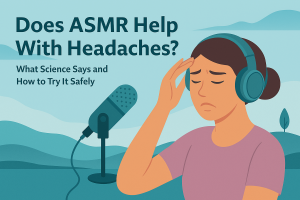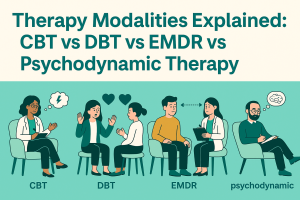If you’ve ever looked out over the smog-hazed skyline of New York City and felt a deep pit in your stomach—like the planet is collapsing around you—you’re not alone.
Eco-anxiety is rising fast, especially in urban centers like NYC where climate change shows up in all-too-real ways: subway floods, heat domes, air quality alerts, and superstorms.
That emotional weight isn’t just worry—it’s grief, dread, and sometimes full-blown panic. But the good news? NYC counselors are already pioneering therapy techniques tailored for this exact kind of stress.
Let’s explore five human-centered, highly effective eco-anxiety therapy techniques used by mental health professionals right here in the city that never sleeps—but increasingly needs to pause and breathe.
Understanding Eco-Anxiety and Its Unique Urban Triggers
What Sets Eco-Anxiety Apart in NYC
In a sprawling, fast-paced metropolis like NYC, eco-anxiety doesn’t just stem from reading headlines—it comes from living in the thick of it. The fears are not abstract. They’re baked into daily life. There’s the anxiety of living in flood zones like Lower Manhattan or the Rockaways.
There’s the heat stress in underserved Bronx neighborhoods. There’s the pollution that turns the summer sky an apocalyptic shade of orange from distant wildfires.
NYC’s eco-anxiety is both intensely personal and painfully collective. People worry about how rising seas will affect their commute, how air pollution will worsen their asthma, or how future generations will fare in a city constantly under climate threat. These aren’t irrational fears—they’re rooted in real, observable changes.
Why Traditional Therapy Needs a Climate-Informed Approach
Standard therapeutic models weren’t designed to address planetary breakdowns. That’s why NYC-based counselors are integrating climate psychology into their practice. Instead of telling clients “not to worry,” they’re validating those fears and offering new ways to process and transform them.
The goal isn’t to numb out or ignore reality—it’s to help people face it without falling apart. That’s where climate-specific therapy comes in.
1. Climate-Aware Cognitive Behavioral Therapy (CBT)
Restructuring Catastrophic Thinking
CBT is a gold standard for anxiety disorders—but when adapted for eco-anxiety, it becomes a powerful tool for managing climate dread. NYC therapists trained in climate psychology use CBT to help clients identify and challenge thought patterns like:
- “The planet is doomed, and nothing I do matters.”
- “We’re all going to die in a flood or fire.”
- “I have to be perfect or I’m part of the problem.”
Instead of dismissing these thoughts, therapists teach clients to examine them critically and reframe them. For example, “Climate change is serious, but I can be part of solutions” becomes a grounding mantra. Replacing catastrophizing with realistic optimism helps regulate emotions and foster resilience.
Replacing Helplessness With Action-Oriented Coping
A key part of CBT for eco-anxiety is shifting from rumination to agency. NYC counselors often use behavior activation—encouraging clients to engage in meaningful action like attending climate rallies, joining local community gardens, or advocating for policy changes.
When you focus on what you can do, the helplessness starts to shrink. Even small acts, like composting or switching to a greener commute, become emotionally powerful when done with intention.
2. Nature-Based Therapy in the Urban Jungle
Green Spaces as Healing Spaces
You don’t need to hike the Adirondacks to get nature therapy in NYC. With Central Park, Prospect Park, and dozens of community gardens scattered across the boroughs, therapists are increasingly guiding clients into urban green spaces for ecotherapy sessions.
Research shows that just 20 minutes in nature can significantly lower cortisol levels and reduce anxiety symptoms. NYC counselors are leaning into this by offering walking sessions, mindfulness practices in parks, and sensory exercises that ground clients in the present moment.
Ecotherapy Techniques Adapted for NYC Living
Therapists often adapt ecotherapy to fit NYC’s unique environment. They might invite clients to:
- Observe plant life growing through sidewalk cracks
- Engage in tree meditations in Riverside Park
- Practice “eco-mindfulness” while watching birds in Inwood Hill
It’s all about reestablishing a connection with the Earth—even in concrete-heavy spaces. This renewed relationship reduces feelings of separation and deepens the sense of purpose that counteracts eco-anxiety.
3. Climate Cafés and Group Therapy Models
Creating Safe Spaces for Climate Conversations
Sometimes, the best way to heal is to speak your truth out loud among people who truly get it. Climate cafés and eco-anxiety support groups are emerging all over NYC, offering a judgment-free space to share feelings, process grief, and listen without “toxic positivity” or solutions being forced down your throat.
These group therapy models are informal but deeply therapeutic. Sessions often begin with a grounding activity, followed by open discussion. There’s no agenda—just honest connection.
For many, these circles are the first place they feel heard and understood in their climate distress.
Peer Support and Collective Emotional Processing
Being surrounded by people who share your eco-anxiety normalizes the experience and helps dismantle the isolation. NYC counselors encourage clients to attend these groups to:
- Validate their emotions
- Discover shared fears and hopes
- Engage in collaborative problem-solving
This peer-to-peer model has proven especially powerful for youth, activists, and frontline communities feeling the mental toll of climate work. The emotional load becomes lighter when it’s shared.
4. Narrative Therapy for Environmental Grief
Reclaiming Your Climate Story
Climate grief is heavy, especially when you feel like just one person against a crumbling world. Narrative therapy helps clients reshape the story they tell themselves—from one of powerlessness to one of agency and meaning.
NYC therapists practicing narrative therapy guide clients to externalize the problem—seeing eco-anxiety not as an identity, but as a response to external pressures. They then help rewrite the narrative by focusing on:
- Personal values and strengths
- Times the client has taken meaningful climate action
- Future visions of hope and community care
Turning Climate Grief Into Personal Empowerment
This technique is especially helpful for artists, writers, educators, and community organizers. It allows them to transform grief into creative output or leadership. For example, a teacher might process eco-anxiety by integrating sustainability education into their curriculum, turning despair into proactive mentorship.
It’s all about choosing your role in the climate story—not letting fear define it for you.
5. Somatic Therapy to Release Climate-Related Stress
Where Climate Trauma Lives in the Body
Eco-anxiety isn’t just in your head—it lives in your body. NYC counselors are increasingly using somatic therapy to help clients recognize where they store climate-related tension: clenched jaws, tight chests, shallow breathing, or chronic fatigue.
Somatic therapy focuses on the body’s response to stress. It emphasizes awareness of bodily sensations and teaches clients how to physically discharge built-up anxiety through movement, sound, and touch.
Body-Based Tools to Calm the Nervous System
Therapists might guide clients through:
- Grounding exercises (like feeling your feet on solid ground)
- Tension-releasing shakes or stretches
- Breathwork techniques that signal safety to the brain
- Self-massage or tapping techniques to soothe nerves
By calming the nervous system, clients become more emotionally available for reflection, connection, and climate action. In NYC’s high-stress, high-noise atmosphere, these practices offer a much-needed sense of control and internal calm.
Conclusion
Eco-anxiety is more than just worry—it’s a deeply felt, rational response to a planet in peril. But in NYC, where the pace is fast and the stakes are high, counselors are developing powerful therapy techniques to meet the emotional moment. From nature-based mindfulness in concrete jungles to peer circles in climate cafés, the tools are out there—and they work.
You’re not crazy for feeling overwhelmed. You’re awake. And with the right support, you can turn that awareness into strength, connection, and meaningful action.
FAQs
1. Do I need to be an environmentalist to benefit from eco-anxiety therapy?
Not at all. Eco-anxiety therapy is for anyone feeling distressed about environmental issues, regardless of how “green” their lifestyle is.
2. Can eco-anxiety therapy help children and teens in NYC?
Yes, many NYC therapists specialize in age-appropriate, climate-focused therapy for youth, using play, storytelling, and creative expression.
3. How often should I attend climate-focused therapy?
Frequency depends on your needs. Some people benefit from weekly sessions, while others check in monthly or seasonally during climate events.
4. Are group climate cafés led by licensed therapists?
Not always. Some are peer-led or facilitated by climate educators, while others are led by licensed professionals trained in trauma-informed care.
5. Is eco-anxiety therapy covered by insurance in NYC?
It can be, especially if the provider is a licensed mental health professional. Always check your provider’s credentials and your insurance plan details.



